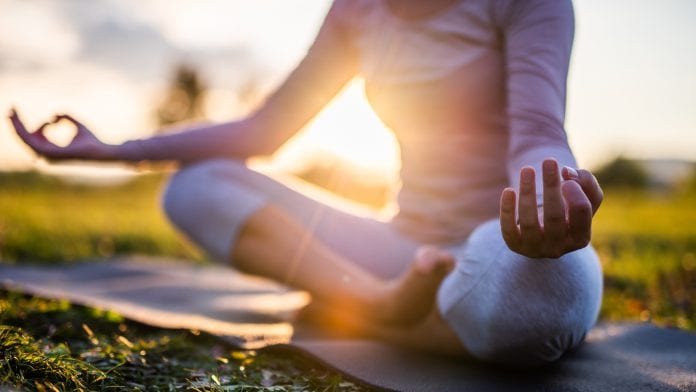
When the allopathic approach towards certain conditions ceases to make you feel better, the ancient Indian practice of yoga may help to treat costochondritis
Guest contributor Rishita Chandra explores the ways in which yoga practice can help with the treatment of the chest pain caused by costochondritis.
Yoga is one of the practices, which is taking the world by storm. Due to its positive effects on a variety of physical and psychological ailments, people are arranging their schedule to give yoga a permanent place.
Whether you are an athlete or an office employee, you might be prone to chest pain due during strenuous activities and sitting still for hours on a computer. In the medical field, such a condition of chest pain is often termed as costochondritis.
What is costochondritis?
When the junction (point of attachment for the cartilage and rib) of the costal cartilage (cartilage that connects ribs to the sternum) gets inflamed temporarily, a person suffers unbearable pain in the chest region. This condition is generally termed as costochondritis. The severity of the chest pain can be so intense, that it can mimic a heart attack.
Causes of costochondritis
The exact cause of costochondritis is not defined. However, there are many reasons that pain can occur. These include:
• Lack of movability;
● Repetitive Physical Activity – creating unnecessary strain in the chest region;
● Severe coughing;
● Poor Posture
Using yoga to treat costochondritis
According to the American Osteopathic Association, regular practices of yoga improves the strength and flexibility of the vicinity muscles and make the joints of rib cage movable, which helps in tackling costochondritis. Some poses which can potentially help to treat costochondritis include:
Virasana (Hero Pose)
Virasana provides your chest to expand well, balanced respiration maintains the motion throughout the thorax. This keeps the muscles, cartilage, and joints functioning.
• Come into the pose by kneeling on your mat;
• Legs should be folded, together and hips apart from each other;
• Expand your chest (without straining) and drop your shoulders in a relaxed way;
• The spine should be straight;
• Inhale and exhale slowly and deeply;
• Repeat the practice as of one’s capability.
Balasana (Child Pose)
Balasana allows the blood to flow towards the chest region for the proper functioning of muscles. It expands the chest and relaxes to give a smooth flexible move to the thorax.
- Come into the pose by kneeling on your met;
- Bring your body down so as your hips lend over your flat mid-upper foot;
- Inhale and exhale to bring down your chest and let your forehead rest on the mat;
- Rest your arms and respire slowly in a relaxing way;
- Repeat and increase the time interval for deep relaxation.
Tadasana (Mountain Pose)
Tadasana gives a deep stretch to the upper body. Doing this asana on a regular basis releases the tension around the chest and shoulder regions.
• Stand erect and feet should be together, hip-width apart;
• Inhale to raise your arms up and interlock your fingers;
• Gradually raise your heels up. Hold and maintain a balance here;
• Exhale to bring down your hands, heels down to regain the previous position;
• Repeat the pose to achieve a good upper body stretch.
Shavasana (Corpse Pose)
Shavasana for calmness to every body part. This provides the body of a practitioner with deep relaxation. Promote deep breathing. Improve blood flow to the chest region. Allow the chest to expand fully.
• Lie down on your back on the mat;
• Legs apart, hands to the side and palms facing upward;
• Inhale and exhale deeply and slowly;
• Relax your each and every body part, loosen your muscles, free up the tension;
• Remain for a few minutes in the asana for the blissful experience
Side Hand Stretching
Side hand stretching affects your pectoral muscles. This improves the range, flexibility, and strength of the muscles.
• Stand near the wall;
• Make a right angle with your right arm;
• Rest your elbow on the wall at the height of the shoulder;
• Inhale and exhale to lean your body forward to experience a stretch in your chest;
• Repeat the exercise gently
Ball Stretching
Ball stretching gives your chest a stretch in a massaging way. This will improve the movability of the upper body and between shoulder and arms. It also improves the blood circulation in that area.
• Take a ball and kneel on it with your left body portion;
• Dive downward using your forearm and the hand should be at the right angle (90*);
• Repeat the same with your right portion of the body;
Rishita Chandra
Master’s of Public Health
Fitsri.com























Chest pain is a very common problem these days due to Unhealthy eating habits or Sedentary Lifestyle. And yoga is an answer to get rid of all such health problems. Every reader should definitely include Yoga in his/her daily routine to remain physically fit and mentally healthy.
Regular practice of yoga forestalls cardiac issues and it can also be a supportive therapy.